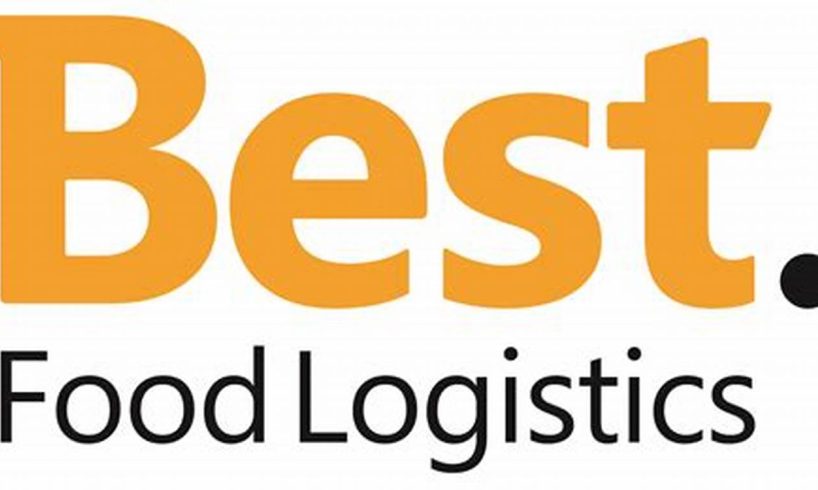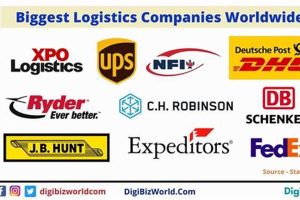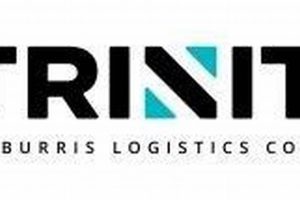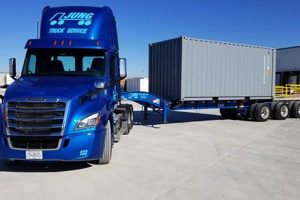
Food logistics companies play a crucial role in the global food supply chain, ensuring that food products are transported from production facilities to consumers in a safe, efficient, and timely manner. These companies provide a range of services, including transportation, storage, and distribution, and utilize specialized equipment and technology to maintain the quality and integrity of food products throughout the supply chain. Examples of food logistics companies include global giants such as DHL Supply Chain and C.H. Robinson, as well as regional and local providers that cater to specific markets.
The importance of food logistics cannot be overstated. Efficient food logistics systems reduce food waste, lower costs for producers and consumers, and improve the overall safety and quality of the food supply. Historically, food logistics has evolved alongside advancements in transportation and technology, with the development of refrigerated trucks, intermodal transportation, and automated warehouses playing a significant role in improving the efficiency and reach of food distribution networks.
In the following sections, we will explore the various aspects of food logistics companies, including their operations, challenges, and the latest trends shaping the industry. We will also examine the role of technology in improving food logistics efficiency and sustainability, and discuss the future outlook for this vital sector.
1. Transportation
Transportation is a critical aspect of food logistics, as it involves the physical movement of food products from production facilities to distribution centers, retail outlets, and ultimately, consumers. Food logistics companies leverage various modes of transport to ensure efficient and timely delivery while maintaining the quality and safety of food products.
- Road Transportation: Trucks and refrigerated vehicles are commonly used for short-distance transportation and last-mile delivery. This mode offers flexibility and cost-effectiveness for regional distribution.
- Rail Transportation: Trains are suitable for long-distance transportation of large volumes of food products. Rail transport provides economies of scale and is often used for bulk commodities such as grains and frozen goods.
- Sea Transportation: Ships are primarily used for international transportation of food products. Sea freight offers a cost-effective option for transporting large quantities over long distances, particularly for non-perishable goods.
- Air Transportation: Air freight is the fastest but most expensive mode of transportation. It is typically used for perishable goods, high-value products, or time-sensitive deliveries.
The choice of transportation mode depends on factors such as the type of food product, distance, cost, and delivery time. Food logistics companies carefully plan and coordinate transportation routes and schedules to optimize efficiency and minimize spoilage.
2. Storage
Storage plays a critical role in the operations of food logistics companies, as it ensures the preservation and quality of food products throughout the supply chain. Specialized storage facilities are designed to maintain optimal conditions for different types of food products, ranging from fresh produce to frozen goods.
- Temperature Control: Food logistics companies utilize temperature-controlled warehouses and refrigerated units to maintain specific temperatures required for the storage of perishable goods. This helps prevent spoilage and extends the shelf life of products.
- Humidity Control: Controlling humidity levels is crucial for certain food products, such as grains and hygroscopic products that can absorb or release moisture. Specialized storage facilities use dehumidifiers or humidifiers to regulate humidity and prevent product damage.
- Inventory Management: Efficient inventory management systems are essential for effective storage operations. Food logistics companies use inventory tracking technologies to monitor stock levels, optimize storage space, and ensure timely product rotation to prevent spoilage.
- Sanitation and Hygiene: Maintaining high standards of sanitation and hygiene is paramount in food storage facilities. Regular cleaning, pest control, and adherence to food safety regulations ensure the integrity and quality of stored products.
These facets of storage are interconnected and contribute to the overall efficiency and effectiveness of food logistics companies. Proper storage practices help preserve the nutritional value, freshness, and safety of food products, reducing waste and ensuring that consumers receive high-quality food.
3. Distribution
Distribution is a crucial component of food logistics companies’ operations, as it ensures the efficient and timely delivery of food products to their final destinations. The last-mile delivery stage, which involves transporting products from distribution centers to retail outlets, restaurants, and consumers, presents unique challenges that require specialized expertise and infrastructure.
Effective last-mile delivery requires careful planning and coordination to optimize routes, minimize delivery times, and ensure product quality. Food logistics companies utilize various strategies to enhance their distribution networks, including:
- Route Optimization: Advanced software and algorithms are used to plan efficient delivery routes, reducing travel time and fuel consumption.
- Vehicle Selection: Choosing the right vehicles for last-mile delivery is essential. Factors such as vehicle size, capacity, and temperature control capabilities are considered to match the specific requirements of food products.
- Real-Time Tracking: GPS tracking systems allow food logistics companies to monitor the location of delivery vehicles in real-time. This enables them to provide accurate delivery ETAs and respond promptly to any unexpected delays or issues.
- Delivery Scheduling: Flexible delivery scheduling options allow customers to choose convenient delivery times, improving customer satisfaction and reducing the risk of missed deliveries.
Efficient distribution is vital for food logistics companies to maintain the quality and safety of food products. Timely delivery to retail outlets ensures that products are fresh and visually appealing to consumers. For restaurants, reliable delivery schedules are crucial for maintaining their operations and providing quality meals to their customers. Home deliveries require precise coordination to ensure that consumers receive their orders in good condition and within the promised time frame.
4. Inventory Management
Inventory management is a critical aspect of food logistics companies’ operations, as it enables them to maintain optimal stock levels, prevent shortages, and minimize waste throughout the supply chain. Effective inventory management practices help food logistics companies meet customer demand, reduce costs, and ensure the efficient flow of food products from suppliers to consumers.
- Real-Time Inventory Tracking: Food logistics companies utilize advanced inventory management systems that provide real-time visibility into inventory levels across all warehouses and distribution centers. This allows them to track the movement of goods, identify potential stockouts, and make informed decisions to replenish inventory.
- Demand Forecasting: Accurate demand forecasting is essential for effective inventory management. Food logistics companies analyze historical sales data, market trends, and other factors to predict future demand for different food products. This enables them to optimize inventory levels and avoid overstocking or understocking.
- Safety Stock Management: Safety stock refers to the extra inventory held to buffer against unexpected fluctuations in demand or supply chain disruptions. Food logistics companies calculate appropriate safety stock levels based on historical data and risk assessment to ensure product availability and prevent stockouts.
- First-In, First-Out (FIFO) Principle: FIFO is a widely used inventory management technique that ensures older inventory is sold or used before newer inventory. This helps prevent spoilage and maintain the quality of food products.
Robust inventory management practices are essential for food logistics companies to operate efficiently and effectively. By optimizing inventory levels, preventing shortages, and minimizing waste, food logistics companies can reduce costs, improve customer satisfaction, and contribute to a more sustainable and efficient food supply chain.
5. Packaging
Packaging plays a critical role in the operations of food logistics companies, as it directly impacts the quality and safety of food products throughout the supply chain. Effective packaging solutions protect food products from damage, spoilage, and contamination during transportation and storage, ensuring that they reach consumers in optimal condition.
Food logistics companies invest significant resources in designing and implementing innovative packaging solutions that meet the unique requirements of different food products. These solutions consider factors such as the type of food product, its fragility, shelf life, and the transportation and storage conditions it will encounter. Advanced packaging materials, such as modified atmosphere packaging (MAP) and active packaging, are used to extend the shelf life of perishable products by controlling the atmosphere inside the packaging and inhibiting microbial growth.
The importance of effective packaging in food logistics cannot be overstated. Inadequate packaging can lead to product damage, spoilage, and contamination, resulting in food waste, lost revenue, and potential health risks for consumers. Conversely, well-designed packaging solutions protect food products from external factors, maintain their quality and freshness, and contribute to a more sustainable and efficient food supply chain by reducing waste and spoilage.
6. Traceability
Traceability is a critical aspect of food logistics, enabling food logistics companies to track the movement and transformation of food products throughout the supply chain, from their origin to the point of consumption. This provides transparency and accountability, offering several key benefits:
- Enhanced Food Safety: Traceability systems allow food logistics companies to quickly identify and isolate contaminated or unsafe food products, preventing them from reaching consumers and minimizing the risk of foodborne illnesses.
- Improved Quality Control: Tracking food products throughout the supply chain helps food logistics companies monitor their quality and identify any potential issues that may affect their safety or integrity.
- Reduced Food Waste: By tracking inventory and identifying products nearing their expiration date, food logistics companies can optimize distribution and reduce food waste.
- Increased Consumer Confidence: Traceability provides consumers with confidence in the food they purchase, as they can access information about its origin, handling, and transportation.
To implement effective traceability systems, food logistics companies utilize various technologies, such as barcodes, RFID tags, and blockchain. These technologies enable the capture and sharing of data at each stage of the supply chain, creating a digital record of the product’s journey.
Traceability is becoming increasingly important in the food industry, driven by growing consumer demand for transparency and food safety concerns. Food logistics companies play a vital role in establishing and maintaining robust traceability systems, ensuring the integrity and safety of food products throughout the supply chain.
7. Sustainability
Sustainability has become an increasingly important aspect of food logistics operations, as companies recognize the environmental and financial benefits of adopting eco-friendly practices. Food logistics companies play a crucial role in reducing the carbon footprint of the food supply chain, from sourcing and production to transportation and distribution.
One of the key ways food logistics companies are promoting sustainability is by optimizing transportation routes and utilizing fuel-efficient vehicles. By carefully planning delivery schedules and routes, companies can reduce unnecessary travel and emissions. Additionally, investing in fuel-efficient vehicles, such as hybrid or electric trucks, can significantly lower fuel consumption and carbon emissions.
Sustainable packaging is another area where food logistics companies are making strides. By using biodegradable or recyclable packaging materials, companies can reduce waste and minimize their environmental impact. Some companies are also exploring innovative packaging solutions, such as edible coatings and plant-based materials, to further reduce their reliance on plastics.
Food logistics companies are also focusing on reducing waste throughout their operations. By implementing inventory management systems and forecasting demand more accurately, companies can minimize food spoilage and reduce the amount of food that ends up in landfills. Additionally, some companies are partnering with food banks and charities to donate surplus food to those in need, further reducing waste and promoting social responsibility.
The adoption of sustainable practices by food logistics companies has a positive impact on both the environment and the bottom line. By reducing their carbon footprint, food logistics companies can mitigate climate change and protect the planet for future generations. Additionally, sustainable practices can lead to cost savings through reduced fuel consumption, waste management expenses, and improved efficiency.
In conclusion, sustainability is an essential component of modern food logistics operations. By adopting eco-friendly practices, food logistics companies can reduce their environmental impact, contribute to a more sustainable food supply chain, and enhance their overall efficiency and profitability.
8. Technology
Technology plays a pivotal role in the operations of food logistics companies, enabling them to enhance efficiency, accuracy, and visibility throughout their processes. By leveraging advanced technologies, food logistics companies can streamline operations, reduce errors, and gain real-time insights into their supply chains, leading to significant improvements in overall performance.
One of the primary ways technology is transforming food logistics is through the use of data analytics and artificial intelligence (AI). These technologies allow food logistics companies to collect and analyze vast amounts of data from various sources, including sensors, GPS tracking devices, and inventory management systems. By harnessing the power of data, food logistics companies can identify patterns, predict demand, and optimize their operations in real-time.
For example, food logistics companies are using AI-powered algorithms to optimize transportation routes, reducing fuel consumption and emissions while ensuring timely deliveries. Additionally, by analyzing historical data and real-time information, food logistics companies can accurately forecast demand, preventing overstocking or stockouts, and minimizing food waste.
Another area where technology is having a significant impact is in inventory management. Advanced inventory management systems provide food logistics companies with real-time visibility into their inventory levels, allowing them to track products throughout the supply chain and make informed decisions about replenishment and storage. This helps reduce the risk of stockouts, ensures optimal inventory levels, and minimizes waste.
Furthermore, technology is enhancing the traceability of food products, enabling food logistics companies to track the movement of products from origin to consumption. This is essential for ensuring food safety and quality, as it allows companies to quickly identify and isolate any contaminated or unsafe products, preventing them from reaching consumers.
The integration of technology into food logistics processes is not without its challenges. Food logistics companies need to invest in the necessary infrastructure, train their workforce, and ensure data security. However, the benefits of technology adoption far outweigh the challenges, as it leads to improved efficiency, reduced costs, increased transparency, and enhanced food safety.
In conclusion, technology is a critical component of modern food logistics operations. By utilizing advanced technologies, food logistics companies can improve efficiency, accuracy, and visibility throughout their processes, resulting in a more sustainable, cost-effective, and safer food supply chain.
FAQs Regarding Food Logistics Companies
This section addresses frequently asked questions (FAQs) about food logistics companies, providing informative and reliable answers to common concerns and misconceptions.
Question 1: What is the role of food logistics companies in the food supply chain?
Food logistics companies play a vital role in ensuring the efficient and safe transportation, storage, and distribution of food products from production facilities to consumers. They provide a range of services, including temperature-controlled transportation, warehousing, inventory management, and last-mile delivery, to maintain the quality and integrity of food products throughout the supply chain.
Question 2: How do food logistics companies ensure food safety and quality?
Food logistics companies prioritize food safety and quality by adhering to strict regulations and implementing robust quality control measures. They utilize specialized equipment, such as refrigerated trucks and temperature-controlled warehouses, to maintain optimal conditions for food products. Additionally, they employ inventory management systems to ensure proper stock rotation and prevent spoilage.
Question 3: What technologies are being used to improve food logistics operations?
Food logistics companies are leveraging advanced technologies to enhance efficiency and accuracy in their operations. These technologies include data analytics, artificial intelligence (AI), and blockchain. By analyzing data from sensors, GPS tracking devices, and inventory management systems, food logistics companies can optimize transportation routes, predict demand, and ensure product traceability.
Question 4: How are food logistics companies addressing sustainability concerns?
Sustainability is a key focus area for food logistics companies. They are adopting eco-friendly practices, such as using fuel-efficient vehicles, optimizing transportation routes, and implementing waste reduction programs. Additionally, they are exploring sustainable packaging solutions and partnering with organizations to donate surplus food to those in need.
Question 5: How can businesses benefit from partnering with food logistics companies?
Partnering with food logistics companies offers several benefits to businesses. These companies provide expertise in food handling, transportation, and storage, ensuring the safe and efficient delivery of food products. They also offer customized solutions tailored to specific business needs, helping companies optimize their supply chains and reduce costs.
Question 6: What are the key challenges faced by food logistics companies?
Food logistics companies face various challenges, including fluctuating demand, perishable goods, and maintaining food safety standards. They must also adapt to changing regulations and consumer preferences while navigating global supply chains and geopolitical uncertainties. However, these companies are continuously innovating and implementing strategies to overcome these challenges and provide reliable and efficient food logistics services.
These FAQs provide a comprehensive overview of the role, practices, and challenges of food logistics companies. By understanding these aspects, businesses and consumers can appreciate the significance of these companies in ensuring a safe, efficient, and sustainable food supply chain.
Transition to the next article section: Food logistics companies play a critical role in the global food system, and their continued development and innovation will be essential for meeting the growing demand for safe, affordable, and sustainable food.
Tips for Effective Food Logistics Management
To ensure efficient and effective food logistics operations, consider implementing the following best practices:
Tip 1: Enhance Communication and Collaboration
Establish clear communication channels and foster collaboration among all stakeholders involved in the food logistics process, including suppliers, carriers, and customers. Open communication enables timely information sharing, proactive problem-solving, and improved coordination, leading to smoother operations and enhanced customer satisfaction.
Tip 2: Optimize Transportation and Routing
Utilize technology to optimize transportation routes and schedules. Consider factors such as traffic patterns, weather conditions, and vehicle capacity to minimize delivery times, reduce fuel consumption, and improve overall efficiency. This optimization can result in cost savings and reduced environmental impact.
Tip 3: Implement Robust Inventory Management
Implement a robust inventory management system to track inventory levels, optimize stock replenishment, and prevent spoilage. Utilize technology to automate inventory tracking, set reorder points, and receive alerts for low stock levels. Effective inventory management helps minimize waste, reduce costs, and ensure product availability.
Tip 4: Ensure Temperature Control and Food Safety
Maintain strict temperature control throughout the supply chain to preserve the quality and safety of food products. Utilize refrigerated vehicles, insulated containers, and temperature-controlled warehouses to prevent spoilage and ensure compliance with food safety regulations. Proper temperature control minimizes the risk of foodborne illnesses and protects consumer health.
Tip 5: Embrace Technological Advancements
Leverage technology to enhance food logistics operations. Utilize data analytics to analyze data from sensors, GPS tracking devices, and inventory management systems. This data can provide valuable insights for optimizing routes, predicting demand, and improving overall efficiency. Additionally, explore the use of blockchain technology to enhance traceability and transparency in the supply chain.
Tip 6: Focus on Sustainability
Adopt sustainable practices to reduce the environmental impact of food logistics operations. Consider using fuel-efficient vehicles, optimizing transportation routes, and implementing waste reduction programs. Additionally, explore sustainable packaging solutions and partner with organizations to donate surplus food to those in need. Sustainable practices not only benefit the environment but can also enhance brand reputation and customer loyalty.
Tip 7: Train and Educate Staff
Continuously train and educate staff on best practices in food logistics, including food safety, inventory management, and customer service. Well-trained staff can effectively handle food products, maintain equipment, and interact with customers, ensuring smooth operations and customer satisfaction.
Tip 8: Monitor and Evaluate Performance
Establish key performance indicators (KPIs) to monitor and evaluate the effectiveness of food logistics operations. Track metrics such as delivery times, inventory levels, and customer satisfaction. Regular performance evaluation enables continuous improvement, identification of areas for optimization, and data-driven decision-making.
By implementing these tips, food logistics companies can enhance the efficiency, safety, and sustainability of their operations. Effective food logistics management is essential for ensuring the timely delivery of high-quality food products to consumers while minimizing waste and environmental impact.
Conclusion
Food logistics companies play a critical role in the global food supply chain, ensuring the safe, efficient, and timely delivery of food products from production to consumption. They provide a range of services, including transportation, storage, distribution, and inventory management, utilizing specialized equipment and technology to maintain the quality and integrity of food products throughout the supply chain.
This article has explored the various aspects of food logistics companies, including their operations, challenges, and the latest trends shaping the industry. It has highlighted the importance of efficient food logistics systems in reducing food waste, lowering costs for producers and consumers, and improving the overall safety and quality of the food supply. As the global population continues to grow and the demand for food increases, food logistics companies will play an increasingly vital role in ensuring food security and sustainability.
The future of food logistics is promising, with continued advancements in technology and a growing emphasis on sustainability. Food logistics companies are exploring innovative solutions, such as autonomous vehicles, blockchain technology, and predictive analytics, to further enhance efficiency, traceability, and environmental friendliness. By embracing these advancements and fostering collaboration among all stakeholders in the food supply chain, we can work towards a more resilient, sustainable, and equitable food system for the future.






